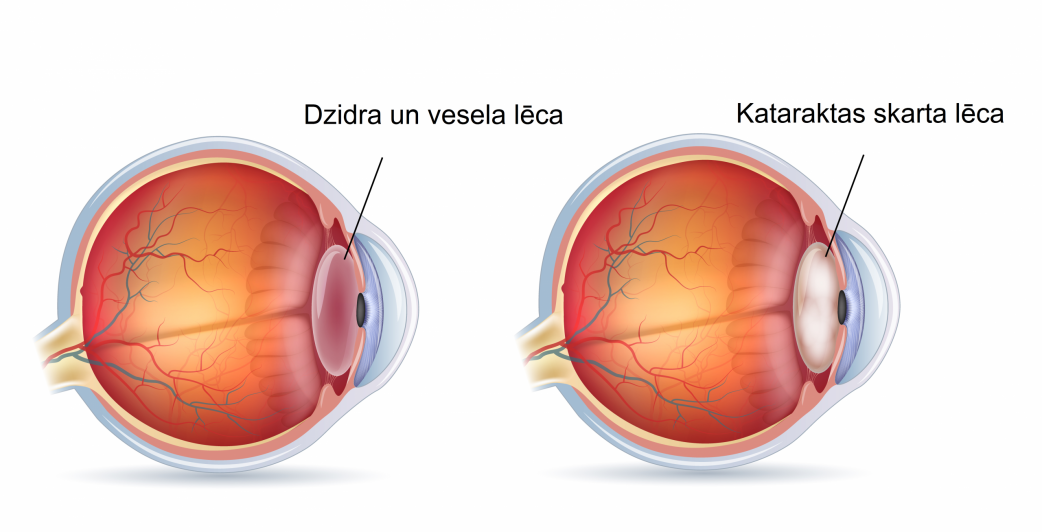To find out about the most suitable vision correction option, register for a visit, or find out other important information, leave your contacts, and we will contact you as soon as possible.
Cataract surgery
Cataracts are a worldwide progressive eye disease that can lead to complete vision loss if left untreated promptly.
The lens of a healthy eye is transparent, and light passes through it without difficulty. In contrast, in the case of cataracts, there is a partial or complete clouding of the eye's transparent lens, i.e., the lens thickens and becomes cloudy, making it difficult to transmit light.

The most common manifestations of cataracts are:
- image blur
- glare, marked sensitivity to light,
- the need to change the strength of the glasses frequently,
- duplication of the image in one eye,
- the need for stronger lighting, such as during reading,
- difficulty seeing and navigating in the dark,
- colour fading, the picture may begin to be dominated by yellow tones.
In the case of a cataract, when the lens is no longer transparent, you may experience blurred vision and blurred images, which can be compared to looking through a frozen or fogged window.
Sometimes patients have a misconception about what a cataract is, so we explain that a cataract:
- is NOT a film covering the surface of the eye,
- is NOT a malignancy,
- does NOT a cause of irreversible blindness,
- does NOT pass from one eye to another,
- does NOT result from eye strain
It is important to note that the above symptoms may also be characteristic of other serious eye diseases - only the eye doctor can determine the actual cause of the symptoms and seek appropriate treatment.
The sooner the patient acts and goes to the eye doctor, the more successful and less time-consuming the treatment process will be, and the patient will return to a full life.
What are the most common causes of cataract development?
The causes of cataracts are very different, but mainly (90% of cases), the disease is related to the human body's ageing, including the visual organ.
Other causes of cataracts may include:
- heredity;
- various general diseases of the body (for example, diabetes, avitaminosis, etc.) and eye diseases (for example, glaucoma);
- eye injuries resulting from, for example, chemical or thermal burns, stabbing;
- long-term use of medications (such as those containing steroids);
- surgery to treat other eye conditions.
How fast does a cataract develop?
The rate of cataract development is individual to each patient and may vary from patient to eye. Most age-related cataracts progress gradually over many years. Other types of cataracts, especially in younger people and diabetics, can develop rapidly even within a few months, causing significant vision loss.
Unfortunately, the rate of cataract development cannot be predicted in any case.
What are the treatment options for cataracts?
Glasses can usually help to improve the patient's vision in the early stages of cataract development. Still, once the cataract has progressed, causing noticeable visual disturbances and even loss of vision, it becomes difficult to carry out regular daily tasks. The only way out is surgical treatment, replacing the opacified lens with an artificial or intraocular lens (IOL).
The doctor recommends the most appropriate intraocular lens type for the patient's eyes and vision, based on the results of the patient's eye examinations and evaluating the patient's lifestyle and daily activities. The patient has the opportunity to choose how far he wants to see without glasses after the operation.
How to determine when to perform cataract surgery?
There is a widespread misperception among patients that a cataract must "prepare" for removal.
In reality, surgical treatment for cataracts can be performed anytime when the patient is aware of this step's need and when the disease has begun to interfere with life.
It is up to the doctor and the patient to decide when the operation is right.



